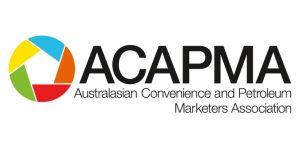By Australasian Convenience and Petroleum Marketers Association Executive Manager Employment and Training Elisha Radwanowski.
In the face of uncertainty communication is the key to achieving clarity. Nowhere is this more important than in the area of the employment agreement. With new rates and new superannuation it is more important than ever to create clarity. ACAPMA has prepared Confirmation of Employment Guides, Templates and Tools to assist members in navigating the uncertainty created by a new financial year with a staggered pay increase.
Why confirm?
It is well understood that there are things that employers need to communicate to employees. What is less clear is how, from a practical stand point, should a business address possible communication gaps that arise from faulty systems, imperfect implementation, rapid growth or changes to the compliance requirements. One of the greatest tools in both addressing these compliance requirements, and ensuring clear and functional communication with employees is the implementation of an annual Confirmation of Employment program.
Confirming the details of the employment arrangement with the employee creates clarity and affords the natural and continual communication about employment elements.
What is a Confirmation of Employment?
A Confirmation of Employment is not a new contract or a letter of offer, it does not change anything about the employees engagement, but it is helpful for confirming many of the communication requirements that are traditionally contained in contracts and letters of offer.
When should a Confirmation of Employment be sent?
A natural time to send Confirmation of Employment letters to staff is around the new financial year, when the Award rates traditionally increase. Similarly, the commencement of a new Enterprise Agreement, or the new pay year of an Agreement or contract are all-natural times to send a Confirmation of Employment. So, if your employees are engaged under an Award, now is the perfect time to be looking at Confirmation of Employment letters.
What should be in a Confirmation of Employment letter?
Much like good Engagement Documents, good Confirmation of Employment letters include the following details;
- Employee Name: The full legal name of the employee
- Date: The date that the Confirmation is being sent
- Business Name: The business name that the employee has been engaged by (the full legal name as well as any trading names)
- Business ABN: The ABN of the business that the employee has been engaged by
- Start Date: The employees Start Date
- Status: The employees Status – Permanent, Permanent Part Time, Casual
- Employment Instrument: The employment instrument that applies to the employees engagement – such as the Award, this should include the full title of the Award and a link to the Award. In the wholesale and retail fuel industry this would be – Vehicle Repair, Services and Retail Award 2020 : for console operators, driveway attendants and roadhouse cooks http://www.fwc.gov.au/documents/modern_awards/award/ma000089/default.htm, Road Transport and Distribution Award 2020 : for fuel tanker drivers http://www.fwc.gov.au/documents/modern_awards/award/ma000038/default.htm, Clerks Private Sector Award 2020 : for administrative staff http://www.fwc.gov.au/documents/modern_awards/award/ma000002/default.htm
- Classification: The employees classification under the employment instruments – such as Console Operator R4, or Transport Worker Grade 6
- Pay Rates: Notation of the applicable pay rates and the period to which they will apply – such as; “The pay rates for Casual Console Operators can be located in Clause 27.3 of the Award”, or “The pay rates for Console Operators can be located in the Award, Clause 16 for Permanent and Permanent Part Time employees and Clause 27.3 for Casual employees.”
Rights at Work: A link to the latest version of the Fair Work Information Statement, that outlines employees rights at work – https://www.fairwork.gov.au/employee-entitlements/national-employment-standards/fair-work-information-statement and the Casual Employment Information Statement for casual staff – https://www.fairwork.gov.au/employee-entitlements/national-employment-standards/casual-employment-information-statement
For Permanent and Permanent Part Time employees it is also a perfect time to confirm the Standard/Guaranteed Hours, expressed clearly as the Days that the employee will work and the time that work will start and finish on each of those days. This is not a stating of the business operating hours, nor is it a stating of the total hours that the employee will work a week, but the specific listing of the Day, Start Time and Finish Time for each of the days the employee will work. One option for communicating this clearly is to refer to (and attach) a copy of the current roster.
In a setting where these Standard or Guaranteed Hours may change over time it is also advisable to clarify how these hours may be varied over time, such as the inclusion of a notation to the effect of; “these standard hours may change over time by mutual agreement, agreement will be taken to have been made through the posting of and acceptance of a roster”.
In addition to these compliance based communications, it can be valuable to confirm other items of employment, such as the location of and nature of business policies, grievance processes etc.
For Casual employees this is also a perfect time to do the Casual Conversion process again.
Published with permission from ACAPMA.
Source: https://acapmag.com.au/2021/07/hr-highlight-time-to-confirm/






